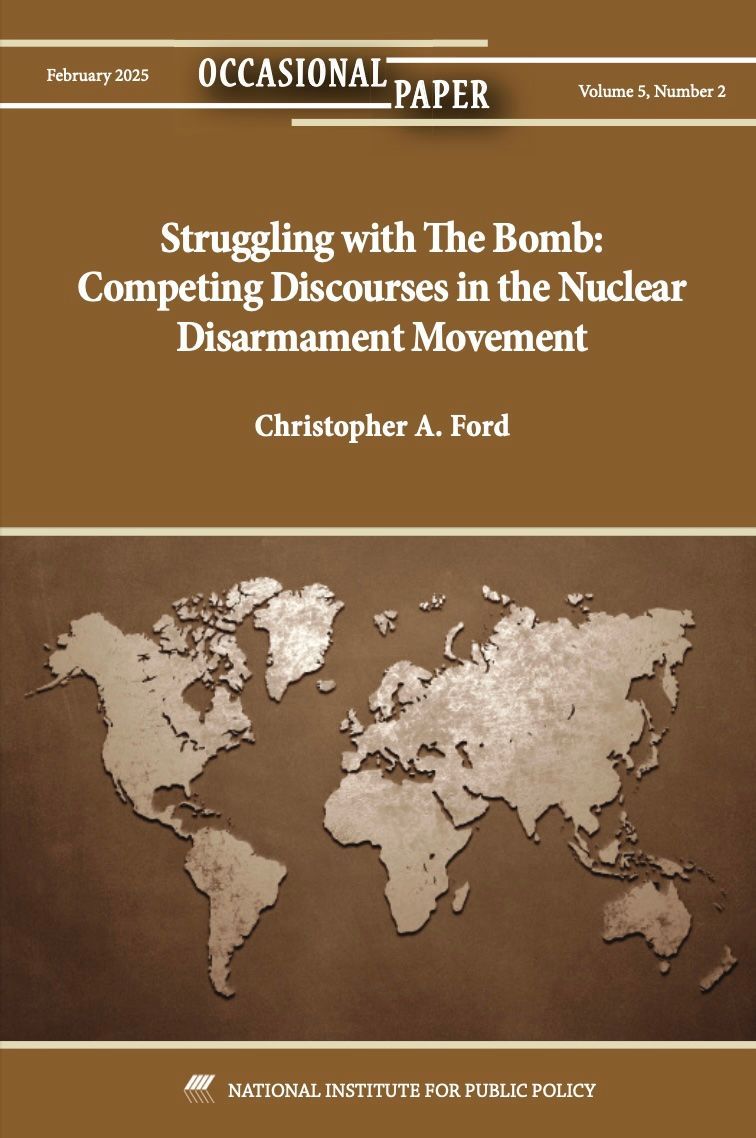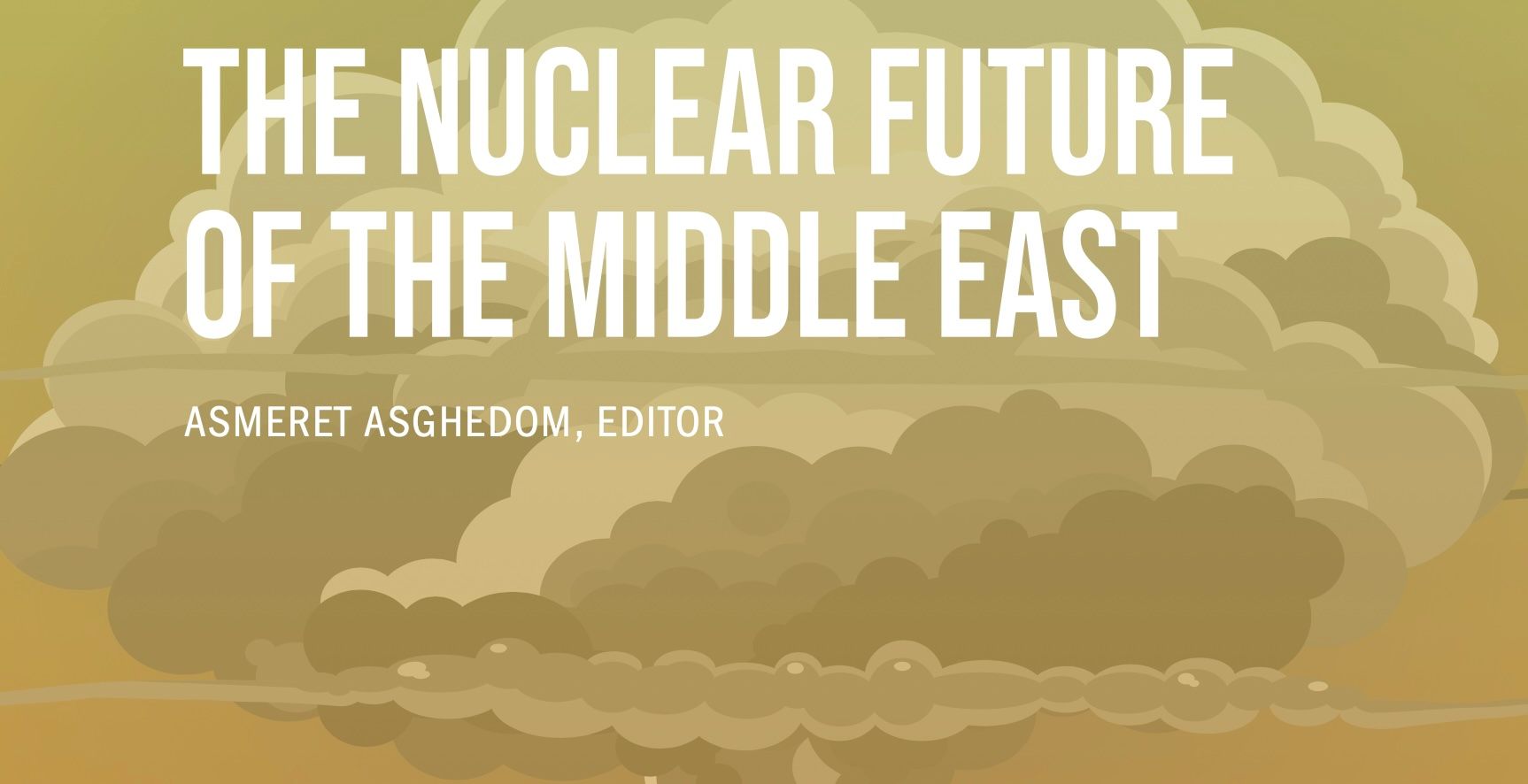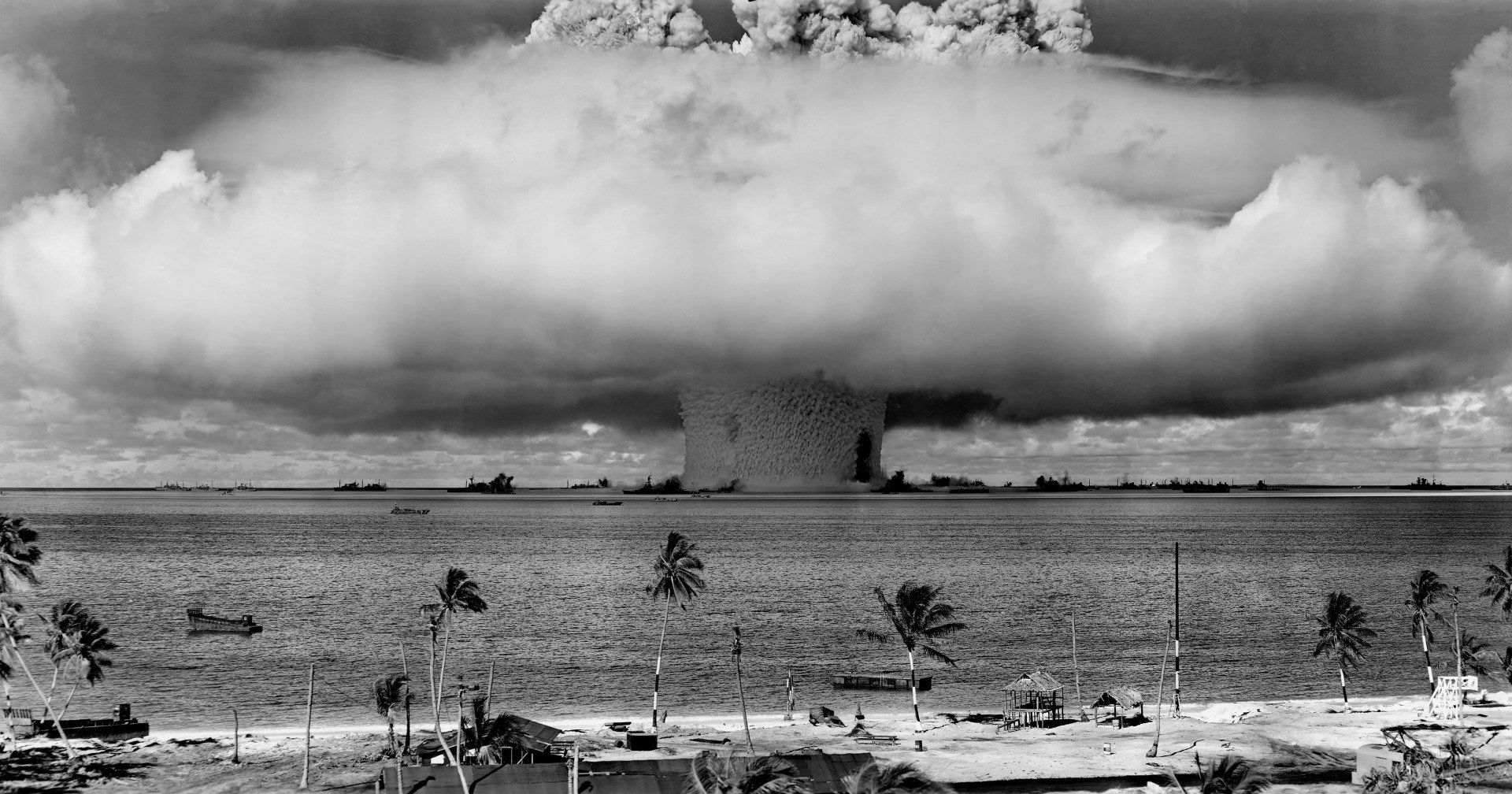What is the Future of Arms Control … Now?
Below is the text upon which Dr. Ford drew in making his informal remarks to a March 13, 2025, workshop as part of the “Future of Arms Control Project” sponsored by the Geneva Graduate Institute’s Centre on Conflict, Development & Peacebuilding (CCDP).
Thank you for inviting me to participate in this event. Truth be told, I am somewhat unsure what to make of the Second Trump Administration’s policies insofar as they bear on the possible future of arms control. In providing you my personal perspectives on this, I can only offer the perspectives of an outsider, of course, and there are surely things behind the scenes that I’m not seeing.
T1 versus T2
Yet the look and feel of the policy process – if indeed that’s the right word at all – are today very much unlike what I experienced in the First Trump Administration, and there’s little sign in “T2” at this point of the degree or kind of interagency policy development and coordination we used when I ran the WMD Directorate at the NSC and then served at the State Department during “T1.” So let’s do a little comparison.
Most Republicans don’t seem to have expected to win the 2016 election, and as I remember well from serving on the NSC transition team, there was a good deal of improvisation as we prepared to come into office. Nonetheless, I feel like there was a good deal of actual strategy and vision that ended up tying the various elements of our policy together on arms control and related international security topics.
In fact, it turned out to be a really seminal time for U.S. national security policy, as we worked to redirect American policy clearly and unapologetically into strategic competition for the first time since the Cold War – finally trying to address U.S. policy to the great power competition challenges that previous leaders had ignored or downplayed for decades. We didn’t exactly start with a plan, but we had a general idea of where we were going and built approaches that had – I would submit – a reasonably coherent strategic vision behind them, which was expressed in the 2017 National Security Strategy, the 2018 Nuclear Posture Review, and the 2018 National Defense Strategy.
Crucially, in developing and implementing policies in support of this vision, many of us in the T1 administration recognized that if they know what they’re doing, competent political appointees can usually succeed in leveraging the skills and professionalism of the federal workforce to steer the ship of national policy in new directions – even if not all of that workforce happened to like us. (We knew they didn’t!) We didn’t throw the institutions and mechanisms of the U.S. national security bureaucracy into chaos and disarray, but rather worked with and through those institutions to make them support our policy goals. And things didn’t go so badly.
In moves with which I had some involvement, for instance, we took a number of steps that grew out of this sense of vision.
- We developed a responsive strategy to Russian violations of the Intermediate-range Nuclear Forces (INF) Treaty that involved commencing treaty-permissible initial R&D on countervailing U.S. systems in an effort finally to move beyond impotent Obama-era finger-wagging into giving Russia a more concrete incentive to change course, and we similarly began to impose lawful countermeasures in response to Russian violations of the Open Skies Treaty.
- We conducted a sweeping review of Obama’s disarmament policy, thus officially abandoning the naïve and ineffective virtue signaling of his so-called “Prague Agenda” while yet laying out a vision for potential future progress through efforts such as the “Creating an Environment for Nuclear Disarmament” (CEND) initiative I began at the State Department.
- We imposed sanctions against the Russians for using a banned novichok chemical weapon in the Sergei Skripal assassination attempt in the UK.
- On President Trump’s instructions, we negotiated with the EU-3 – unsuccessfully, alas – to find a way to prevent then-current JCPOA restrictions on Iran’s nuclear program from “sunsetting.”
- We commenced work on a new nuclear-armed submarine-launched cruise missile – the SLCM-N – to replace the system Barack Obama had unilaterally scrapped in 2010, and we brought into service the new lower-yield W76-2 weapon as part of an effort to start providing at least some re-stabilizing counter to the array of lower-yield weapons Russia and China were already fielding in connection with their strategies of theater-level nuclear coercive bargaining.
- We drew the world’s attention to China’s “Military-Civil Fusion” strategy and other such moves, and we began to move U.S. national security policy (especially national security export controls) into a new technology-denial agenda to support competition – a move that, to my surprise and pleasure, even the Biden Administration recognized was of vital importance and continued aggressively.
- By late 2019, moreover, we were developing concepts for what I called “next-generation arms control” on a “trilateral” basis with Russia and China, and we began pressing China to engage with us on what such a future might look like. President Trump then brought in my colleague Marshall Billingslea to make a high-profile push for this around the world.
Beijing didn’t respond to our arms control overtures, of course, and indeed embarked upon a staggeringly large and rapid nuclear weapons build-up. Nor did Russia cease its multiple arms control violations, and President Trump thus pulled out of both the INF Treaty and Open Skies. But one certainly cannot say we didn’t try, or that there was no strategic vision behind U.S. policy.
(In other areas, moreover, the First Trump Administration took further important steps to revise Obama Administration policies that badly needed changing – such as loosening overly restrictive conditions placed on counter-terrorist strikes and certain types of cyber operation. And we stood up to Russian extraterritorial aggression by overturning Obama’s ban on “lethal” assistance to Ukraine and providing it with badly-needed Javelin anti-tank missiles and other support. We also wiped out a large group of Russian Wagner Group soldiers who rather unwisely attacked a small American anti-ISIS outpost in eastern Syria. Given recent events, it’s useful to remember some of this backstory from the “T1” days.)
I dwell on events from that period simply to point out that there is nothing inherently incompatible between a Trump Administration and having a solid, sound, and coherent national strategy that protects and advanced American security interests in a challenging world. We know how to do this.
But what is one to make of things now from the perspective of the potential future of arms control? I can’t sit here and tell you that there is no plan or coherent vision that ties policy inputs together with specific desired policy outcomes in a genuine strategy, but neither can I really point to what such a plan might be. A mere two months in, it is perhaps too early to tell anyway. We’ll just have to wait and see.
A Vision for the Future of Arms Control?
That said, what might we see going forward? Well, as I have repeatedly suggested over the last few months – including here, here, and here – I think it would be quite consistent, both with President Trump’s desire for nuclear weapons negotiations and with his desire to pursue “peace through strength,” for the United States to: (1) once again very actively seek arms control with Russia and China; but at the same time also (2) rapidly work to augment the United States’ nuclear capabilities and weapons production infrastructure.
Those two policies are not in tension with each other, but would in fact be highly complementary. Augmenting our capabilities is needed to provide Russia and China with concrete reasons to negotiate meaningfully with us, forestalling an accelerating arms competition that a more robust American posture would make clear is not in their interest. A more robust posture – especially with respect to the infrastructure, with U.S. leaders long neglected – would also provide us with a “hedge” both against possible Russian or Chinese cheating, and also against the possibility that negotiations could fail to reach a good conclusion. Such a two-pronged approach is precisely how “strength” can serve “peace.”
Challenges to Overcome
Threat Perceptions
As I noted in a recent article, although there’s little need for arms negotiating when relations between two would-be counterparties are extremely good, having reciprocal views and threat perceptions that are too poisonously antagonistic can make agreements much more difficult.
Remember that at the same time that Putin was referring to the West as being “Satanic,” Joe Biden announced in his 2022 National Security Strategy that there was pretty much no way to ever to negotiate with Vladimir Putin. (Biden declared that Putin had spurned all U.S. efforts at constructive engagement and, crucially, that “he will not change.”) Such reciprocal threat assessments pretty much ruled out talking.
But while President Trump’s unaccountable warmth toward Putin and adoption of Kremlin propaganda talking points about Putin’s brutal war of aggression and annexation against Ukraine is shocking and disturbing for all sorts of reasons, it certainly represents a way out of the kind of reciprocal antagonisms that I talked about in my early 2024 article as presenting an obstacle to arms control engagement. So perhaps the arms control community can find a small sliver of hope there, at least.
Russia’s Legacy of Arms Control Cheating
That said, any prospect for new negotiations would still have to overcome the trust-corrosive legacy of the Putin regime’s woeful history of violating its arms control-related promises. If you’ve been following such issues, the list of arms control-related promises that Russia has broken is truly impressive, in a demented sort of way: the INF Treaty, the Conventional Forces in Europe (CFE) Treaty, the Open Skies Treaty, New START, the Presidential Nuclear Initiatives (PNIs), the Budapest Memorandum, the Chemical Weapons Convention, the biological and Toxin Weapons Convention, and even Russia’s own nuclear testing moratorium. If indeed there were new arms control talks, it’s thus not obvious to me how the Kremlin would persuade any serious American interlocutors – or the Chinese, for that matter – that “next time will be different” and the Kremlin would actually keep its promises.
The “China Shadow”
More importantly, speaking of the Chinese, nothing has yet happened to point to a solution to the problem of the “China shadow” that hangs over arms control – that is, the ways in which China’s massive conventional and nuclear build-ups cast a dark pall over what it is possible to imagine us being able to agree upon with Russia on future arms control when it comes to limitations, let alone reductions. If China were not sprinting toward what seems likely to be at least nuclear parity, I might imagine a number of possible approaches to arms control between Washington and Moscow. But with both the United States and Russia having to both also now be looking over their shoulder at threats from China – our most challenging strategic competitor and Russia’s ancient enemy – it’s far from clear what arms control limits would today be viable.
Perhaps the U.S. Government’s current remarkable embrace of Putinism is in fact intended – as some in the Washington policy community are trying to encourage others to believe – to “peel Russia away” from China. (If so, I suppose that could indeed have potentially important implications for future arms control negotiating.) Nevertheless, I see no sign of that happening as yet – and it seems rather unlikely. After all, we are hardly in a position to replace Beijing in providing massive support to Russia’s defense industrial base and war effort, and we shouldn’t want to be. Nor are we in a position to replace China as a purchaser of Russian fuel and mineral resources. I see little reason for even the slightest chance that Russia will change its foreign and security policy in any way that diminishes its structurally and inherently anti-American partnership relationship with China.
Rather than this U.S. shift representing a “reverse Nixon” strategy in which we seduce one big adversary into cooperating with us against a second, bigger one, it is more likely that this will turn out to be no more than a kakistocratic exercise in us being ourselves “peeled off” from our longstanding alliances with states with which we actually share powerful common interests and values. Rather than representing a feat of brilliant statesmanship, that would make the world less peaceful and secure, also consigning to grim futures of vassalage a number of peoples who are no less free and sovereign in their national liberties than we Americans ourselves.
Nor am I very comfortable with the argument one sometimes hears that the United States simply needs to “pause” its posture confronting Russian aggression in order to “prioritize” facing down China in the Indo-Pacific because we are too weak to deal with both challenges. Being able to prioritize is certainly a crucial part of strategy, and as I made clear last year n my contribution to a CSIS project exploring a warfighting scenario that involved simultaneous nuclear weapons use by both Russia and China, I have little difficulty prioritizing the Indo-Pacific. Nevertheless, as I emphasized,
“Prioritizing one thing need not mean euthanizing the other. Indeed, any failure to stand by NATO would likely have significant adverse consequences in the Indo-Pacific, whose leaders would be watching the war in Europe [in that scenario] carefully as a window into their own ability to rely upon the United States when things become difficult. Just as the United States prioritized defending Europe from the Nazis in World War II without backing off in the war against Japan in the Pacific, even if the United States must now prioritize East Asia in certain ways, it should not abandon Europe.”
The idea that we are too weak to deter two revisionist aggressors at the same time is an assertion about American decline that seems to be being oversold in order to rationalize decisions made for other reasons. To be sure, I don’t rule out the possibility that we could make such declinism come true by willfully enfeebling ourselves – such as, perhaps, by slashing defense budgets, sacking our country’s national security professionals, veering wildly between inconsistent policy positions, undermining the U.S. economy through counterproductive trade policies and gob-smackingly high levels of federal indebtedness, destroying America’s scientific and technological competitiveness by dismantling the U.S. research and development base, disestablishing the assistance and capacity-building programs and institutions that can help us win friends elsewhere in the world and strengthen them against adversity, closing the offices and research programs that help American leaders understand strategic trends and refine U.S. defense strategy, and prizing performative posturing in the social media attention economy over reaching meaningful agreements and building resilient relationships. Nevertheless, unless we Make America Weak Again through mad fanaticisms or just strategic inattention, it does not have to be that way.
Today’s emerging, reinvigorated, and more security-focused Europe should be neither a competitor nor a replacement for the United States in that region. It can and should be, rather, a powerful partner – allowing us to maintain our own interests and position in Europe while actually strengthening defense and security in the Indo-Pacific vis-à-vis China by demonstrating that America’s commitments to our friends actually mean something and that revisionist aggressors cannot push us around.
This is vital to the future of arms control, too, inasmuch as America will surely do far better in any future arms negotiations if our adversaries do not see us as weak, capricious, and easily manipulable chumps.
Nuclear Weapons Proliferation
As a final note, it’s worth pointing out that current events are also putting enormous pressure on the global nonproliferation regime. As I pointed out to another Track 2 dialogue with Russians the other day, today’s coincidence of events – specifically, Russia’s war of of territorial aggression in Europe, the growing threat of more such warfare in Asia by China, and the clear erosion of America’s commitment to its allies and security partners – creates huge incentives for nuclear weapons proliferation among those allies and partners. American alliances have proven the world’s best nonproliferation tool for as long as I have been alive, but frankly, under current circumstances, it’s hard to blame the would-be victims of such territorial aggression for entertaining the thought of nuclear weaponization. In their shoes, so would I.
Accordingly, unless we in the United States either hugely shore up our commitments and capabilities to stop the current self-inflicted hemorrhaging of U.S. credibility, or we somehow see the end of the threats of Russian and Chinese aggression that are currently driving those proliferation pressures, the “future of arms control” might have to include a great many new players before too long. Those dynamics, alas, are important to the future of arms control too.
—Christopher Ford








